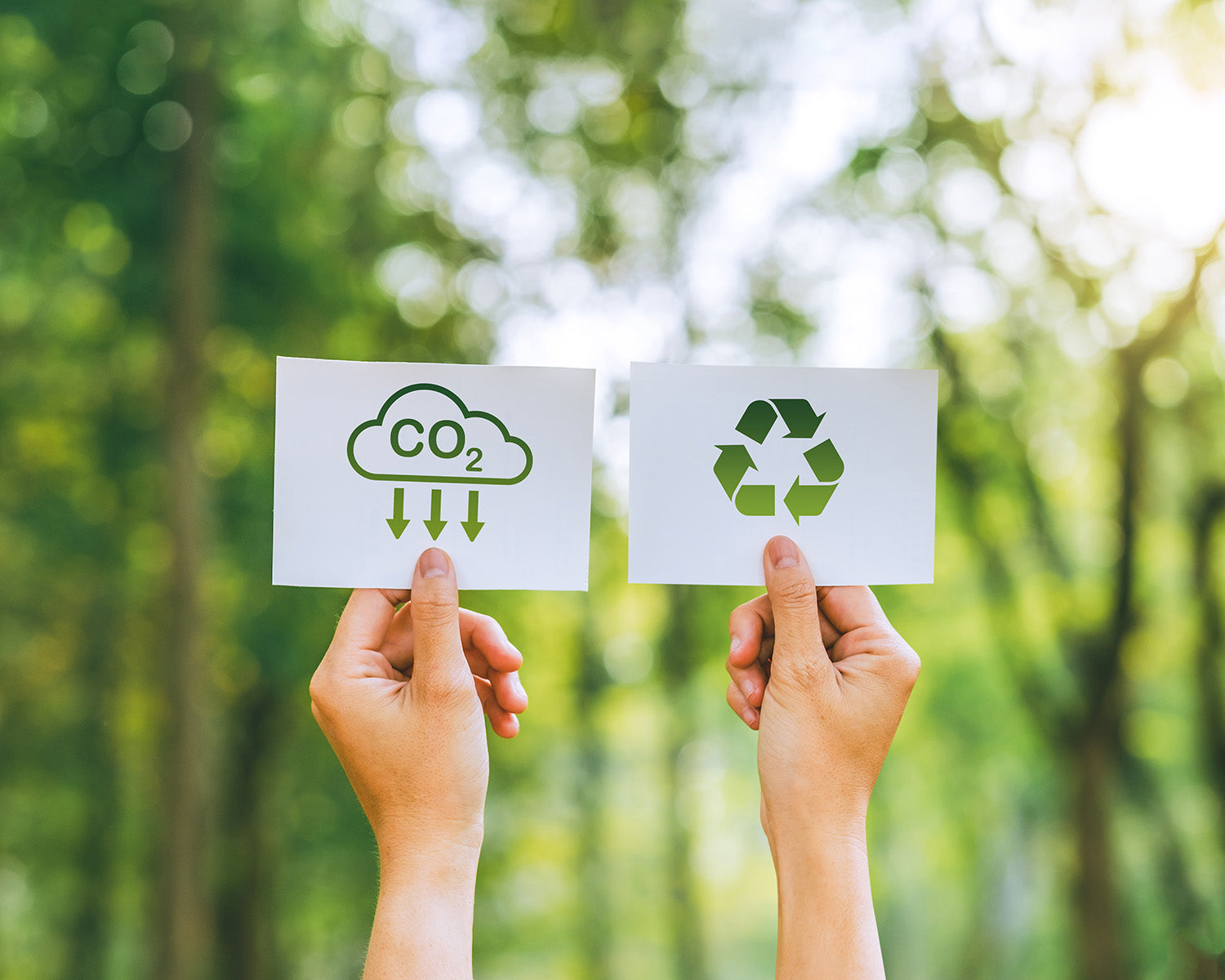By upcycling used footwear we keep shoes out of landfill for longer and we prevent new uppers of shoes being made. We remove the old sneaker sole and replace it for a repairable leather sole. By keeping used shoes out of landfill we prevent the emission of CO2 gasses.
Calculating the co2 emissions of our Resoul™ proved to be quite a challenge. Therefore we have used publicly shared information to make an informed estimation.
13,7 kg co2 savings = 1,3 trees absorbing co2 for a year
Resoul™ sole emissions
The sole of a shoe is 53% of the total shoe. The approximate co2 emission of a shoe made from leather is 24,5 kg co2.
53% * 24,5 kg co2 = 13kg co2 emission calculated in life cycle analysis for the Resoul™ sole.
Resoul™ sole = 13kg CO2e
Total Resoul™ emissions
In this calculation we will use life cycle analysis data of a standard pair of sneakers, which is 14 kg CO2. The stages of that lifecycle are:
Material Processing 4 kg CO2
This includes the farming of raw materials and production of synthetic materials, to the point where they are ready to be used in the next step. energy
Manufacturing 9.5 kg CO2
The production of the shoes. Cutting and stitching the upper, attaching the midsole and outsole.
Logistics 0,2 kg CO2
Transportation of materials to factories, transporting finished goods to be sold. Emissions come from fuel used to transport the shoes.
Usage and End of Life 0,3 kg CO2
At the end of life, 85% of sneakers are sent to landfill or incinerated, releasing harmful chemicals.
4 kg CO2 + 9.5 kg CO2 + 0,2 kg CO2 - 0,3 kg CO2 = 13,7 kg CO2 saved per pair of sneakers by keeping them out of landfills and using them again.
The total emissions for a Resoul are:
13kg co2 (Resoul sole emissions) + 0,3 kg CO2 (end of life sneaker emissions) = 13,3 kg CO2e
Resoul™ sole = 13kg CO2e
Accountability:
The accuracy of our carbon footprint assessment depends on the quality and specificity of the data we have collected. Therefore we need to add a disclaimer that this information is in no way a display of the actual data. However we are confident that our estimate is as close to the actual number as we could get. Our goal for the future would be to have the numbers recalculated using a verified third-party Life Cycle Analysis tool. The results of our assessment help us identify areas for improvement and set targets for reducing our carbon footprint. This involves sourcing more sustainable materials, optimizing manufacturing processes, or implementing more energy-efficient transportation practices.



